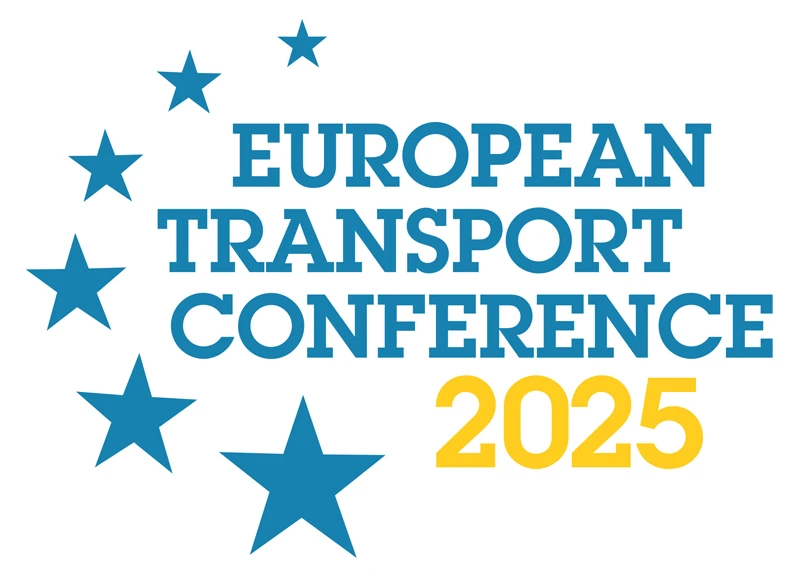-
Past ETC Papers

Browse, search and view papers from the past AET Conferences.
-
Members' Area

AET promotes networking and exchange of ideas, information and opportunities amongst members.
ETC Conference Papers
Conference Past Papers Repository
Integrating mobility and urban planning in rural and suburban areas of the French Alps: lessons from the Interreg ASTUS project
Seminar
Day 1 (9 Oct 2019), Session 2, Land Use and Transport Interaction (LUTI), 14:00 - 16:00
Status
Accepted, awaiting documents
Submitted by / Abstract owner
David Dubois
Authors
Gilles Bentayou, Cerema, gilles.bentayou@cerema.fr
David Dubois, Cerema, david.dubois@cerema.fr
Sylvie Duvillard, UGA, sylvie.duvillard@univ-grenoble-alpes.fr
Grégoire Feyt, UGA, gregoire.feyt@univ-grenoble-alpes.fr
Marie-Christine Fourny, UGA, marie-christine.fourny@univ-grenoble-alpes.fr
Short abstract
This paper proposes a feedback on three approaches aiming to implement integrated mobility and urban planning strategies in rural or suburban areas of the French Alps. This research has taken place in the framework of Interreg ASTUS project.
Abstract
This paper proposes an empirical analysis resulting from an action-research aiming to implement integrated mobility and urban planning strategies in three rural or suburban areas of the northern French Alps. As many other Alpine areas, these territories host more and more new inhabitants attracted by a better environment and more affordable housings. However, this residential attractiveness, combined with the mountainous morphology and the dispersion of places of housing, employment and activities, generates high car dependency. It results in multiple social and environmental problems: increase of road traffic, decrease of agricultural lands and natural spaces, deterioration of air quality, high mobility costs for households, etc. The high symbolic value of these places leads mobility to become a priority of European policies in these regions. Our action-research has dealt with this issue in the framework of Interreg ASTUS project (Alpine Smart Transport and Urbanism Strategies).
We will first examine the territorial production context of integrated mobility and urbanism strategies. Our three territories present original situations in terms of spatial dynamics and institutional contexts. One includes a few medium-sized cities located on the shore of Lake Geneva and numerous small rural municipalities, the whole being under strong influence of Geneva urban area. A second encompasses mainly valley sectors crossed by transalpine highways and polarized by a few large cities. The third one is a rural and mountainous area, with high recreational and residential attraction, bordered by several dynamic cities. These situations lead to complex articulations between institutional perimeters and invited us to pay a strong attention to the scales and levers that make it possible to define an integrated urbanism-mobility strategy.
In a second step, we will discuss the process of collective construction undertaken in each territory. Indeed, while several recent experiences show a relative innovation dynamic in the models and tools of public action, they usually only concern large metropolis areas. The approach of our rural and suburban territories includes successive steps of collaborative work: appropriation of the diagnosis; reflection on possible future scenarios; choice of one scenario and definition of a strategy to achieve it; and finally identification of desirable and achievable actions. Each of these steps was based on a workshop gathering a wide variety of stakeholders in the fields of mobility and urbanism: local authorities, transport operators, local associations, economic actors, etc. A critical view on this approach invites us to interrogate the weight of normative models in the proposed solutions, and the difficulty in elaborating a project specifically adapted to this kind of territories. For most of them, the considered solutions remain largely inspired by urban models; original and singular solutions indeed appear to be quite scarce. However, these limits should not lead to neglect other substantial contributions of these collaborative experiences: they constitute a cognitive learning process inducing involved stakeholders to (re)adjust their representations.
Thirdly, we will analyse the change of representations among the stakeholders. We will particularly present the different cartographic visualizations produced, and discuss their role in the production of action choices. On the one hand, inputs consist in material produced by experts and designed in order to identify and differentiate mobility and urbanism issues within the territory. On the other hand, workshops outputs consist in mental maps that have collectively helped to identify problems, to decline prospective visions and to define relevant actions. The confrontation between inputs and outputs highlights the circulation of knowledge. The inputs are indeed useful for collective strategic reflection, but rather have to do with a perspective shift than with the accuracy of the diagnosis itself. The outputs often reveal new articulations between urbanization and mobility; they also sometimes reflect a reversal of representations, such as proposals aiming to organize structuring places (i.e. poles of services and activities) by suiting mobility flows.
This experience of participatory processes leads us to draw several lessons. It first shows that the cartographic tool facilitates visualization of possible articulations between mobility and urbanism. Then, the collective dynamics associating various stakeholders helps to identify the crossed constraints and obliges to find areas of compromise. Finally, even if the envisaged mobility solutions are not always innovative, they lead to rethink organization and governance of the territory. This could suggest an evolution towards the idea of a Transit-Oriented Development (TOD) for rural or suburban areas; in this scheme, the main concern would no more focus on establishing compact and dense developments along public transport network, but rather to define a territorial model in which car use fades in favour of a more sustainable mobility.
Programme committee
Planning for Sustainable Land Use and Transport
Documents:
No documents yet.
Association For
European Transport
Forester House
Doctors Lane
Henley-in-Arden
Warwickshire, UK
B95 5AW
+44 (0) 15 64 793552
VAT number: 710 1866 64
Conference Supporters & Endorsers




Legal Entity
The Association for European Transport is registered as an Association ('vereniging') with the Chamber of Commerce for Haaglanden in The Netherlands under company number 27170096.
Built on Zenario




